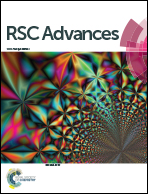Influence of morphological and chemical features of biochar on hydrogen peroxide activation: implications on sulfamethazine degradation
Abstract
This paper investigated how morphological and chemical features of biochars influenced hydroxyl radical (˙OH) generation and sulfamethazine (SMT) degradation in the presence of hydrogen peroxide (H2O2). Effects of SMT adsorption on H2O2 activation by biochar were also studied. In this study, a series of wheat chars were pyrolyzed anaerobically at six heat treatment temperatures (HTT) (300, 400, 500, 600, 700, and 800 °C) and characterized for morphological and chemical features. Higher-temperature biochar led to the higher yield of ˙OH formed during H2O2 activation, which might be due to the better morphological features and higher content of basic character biochar obtained at high temperature. The degradation efficiency of SMT (13.7 μM) went up from 93.4% to 100% and the pseudo-first-order rate constant increased from 0.0211 min−1 to 0.427 min−1 with the increase of charring temperature in H2O2/biochar system. Furthermore, biochars' reactivity toward H2O2 was inhibited by the adsorption of SMT on their surface. The present findings highlighted the influence of morphological and chemical features of biochar on H2O2 activation, and provided a new approach for biochar application to organic contaminant removal.


 Please wait while we load your content...
Please wait while we load your content...